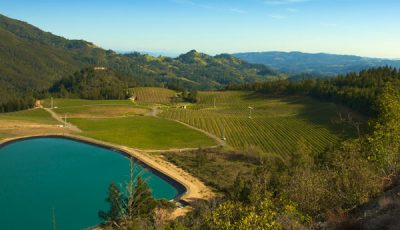The Project:
 The projects proposed in the Phase 2 Program would continue to build upon commitments to long-term inter-agency cooperation to address common needs related to reliable water supplies and enhanced environmental restoration. These projects would include construction and operation of treatment capacity improvements, distribution facilities, and storage facilities (seasonal and operational) to provide recycled water for environmental, agricultural, and municipal reuse in the North San Pablo Bay region, which encompasses approximately 318 square miles in Marin, Sonoma and Napa counties. Pipeline and pumping facilities would be installed within or along existing roadways. Treatment and storage facilities would be located at or near existing wastewater treatment plants. This recycled water would be used in a manner consistent with the California Code of Regulations, Title 22, pertaining to the use of tertiary-treated recycled water.
The projects proposed in the Phase 2 Program would continue to build upon commitments to long-term inter-agency cooperation to address common needs related to reliable water supplies and enhanced environmental restoration. These projects would include construction and operation of treatment capacity improvements, distribution facilities, and storage facilities (seasonal and operational) to provide recycled water for environmental, agricultural, and municipal reuse in the North San Pablo Bay region, which encompasses approximately 318 square miles in Marin, Sonoma and Napa counties. Pipeline and pumping facilities would be installed within or along existing roadways. Treatment and storage facilities would be located at or near existing wastewater treatment plants. This recycled water would be used in a manner consistent with the California Code of Regulations, Title 22, pertaining to the use of tertiary-treated recycled water.
The Draft EIR/EIS will consider two alternatives, as well as the No Action and No Project Alternatives. The Action Alternatives consist of treatment, transmission, and storage facilities necessary to meet a range of recycled water demand scenarios within the NBWRA service area through 2025. Each Action Alternative considers varying levels of recycled water use and corresponding levels of regional facility integration.
Environmental Analysis:
Analysis of environmental impacts associated with the NBWRP Phase 2 alternatives identified potentially significant impacts, primarily temporary impacts resulting from construction activities, in the following areas: aesthetics; air quality; biological resources; cultural and tribal resources; energy conservation; environmental justice; groundwater; hazards and hazardous materials; hydrology and water quality; land use and agricultural resources; noise; public services; recreation; transportation and traffic; and, utilities and service systems. Growth inducement potential, secondary effects of growth, and cumulative impacts are also addressed in the Draft EIR/EIS. For environmental impacts determined to be significant or potentially significant, mitigation measures have been identified to reduce those impacts. Per CEQA Section 15087(c)(6), the Draft EIR/EIS identifies sites with documented use, storage, or release of hazardous materials or petroleum products under Section 65962.5 of the California Government Code found within 660 feet of the Phase 2 project components.
